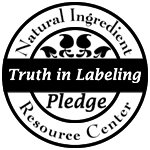Bleached tampons contain two things with which we should be concerned:
1. Dioxin
According to the National Research Center for Women and Families, dioxin was found in several brands of tampons and at least one 100% cotton brand (see Organic vs. Non-organic, below).
The tampon industry is convinced that we, as women, need bleached white products - they seem to think that we view the product as pure and clean. Dioxins are a by-product of the bleaching and manufacturing process of tampons and other feminine hygiene products.
Dioxin has been identified as potentially carcinogenic (cancer-associated) and is toxic to the immune and reproductive systems. It has been linked to endometriosis in women and lower sperm counts in men. For both men and women, it breaks down the immune system.
In the mid-90’s, tampon manufacturers switched to chlorine-free bleaching in an effort to reduce the levels of dioxin in tampons. However, the FDA acknowledges that the alternative process can still generate dioxins at “extremely low levels.” The Environmental Protection Agency reports that there really is no "acceptable" level of exposure to dioxin. When you consider the average woman likely uses over 10,000 tampons in her lifetime, even small traces of dioxin may add up.
2. Rayon
Most tampons are made from cotton or a rayon-cotton blend. Rayon is a highly absorbent synthetic fiber that is made from wood pulp. The good news is that Rayon is great for absorbency but the not-so-good news is that when fibers from the tampons are left behind in the vagina (as usually occurs), it creates a breeding ground for the dioxin, and stays in a lot longer than it would with all cotton tampons (which do not shed). This can also lead to the occurrence of TSS (Toxic Shock Syndrome).
Still need convincing? Take one of your tampons and soak it in a glass of water overnight. Remove the tampon and observe the remaining fibers floating in the water.
So…WHAT IS THE ALTERNATIVE?
If you are freaked out by the thought of bleach and fibers in your uterus then you’ll want to switch to a safer tampon. The key words to look for are 100% cotton, organic and unbleached.
Unfortunately, there are only a few companies that make such tampons. I have been using Natracare organic tampons for a few years after reading that they help reduce cramping. They work just as well as regular tampons. They are a little more expensive and they are not likely to be available at your local discount warehouse, grocery or drug store. You can find them at most health stores and online.
Countries all over the world (like Japan, Sweden, Germany and Britain) have demanded a switch to safer tampons, while the U.S. continues to endorse the use of bleached tampons. The FDA has not called for testing of potential dioxin levels in tampons, and currently does not require package warnings.ORGANIC vs. NON-ORGANIC
In the U.S., more than one billion tons of pesticides and herbicides are sprayed on cotton crops every year; and residues may taint tampons. Many of these pesticides can damage the nervous system, lead to cancer or function as hormone disruptors.
Much of the cotton crop in the U.S. is now also genetically engineered, a fact that has some health advocates worried over long-term effects. The London-based Institute for Science in Society has warned that genetically engineered cotton in tampons could give rise to antibiotic-resistant bacteria. So, definitely look for 100% organic cotton.
What about pads and personal wipes? Well they do contain dioxin as well but since they are not in direct contact with the vagina, the risk is lower. There are other reasons to switch but we will cover those in a future blog!
Regardless of the law, the choice of which tampon you buy is still yours to make!
Please let us know what you think by completing the poll to the top right. Samantharoma is currently taking orders for Natracare tampons, please email for details.
The following sources were used in compiling this article:
http://forums.obgyn.net/womens-health/WHF.9810/0511.html
http://www.natural-living-for-women.com/organic-tampons.html
http://www.organicconsumers.org/bodycare/tampons090704.cfm






